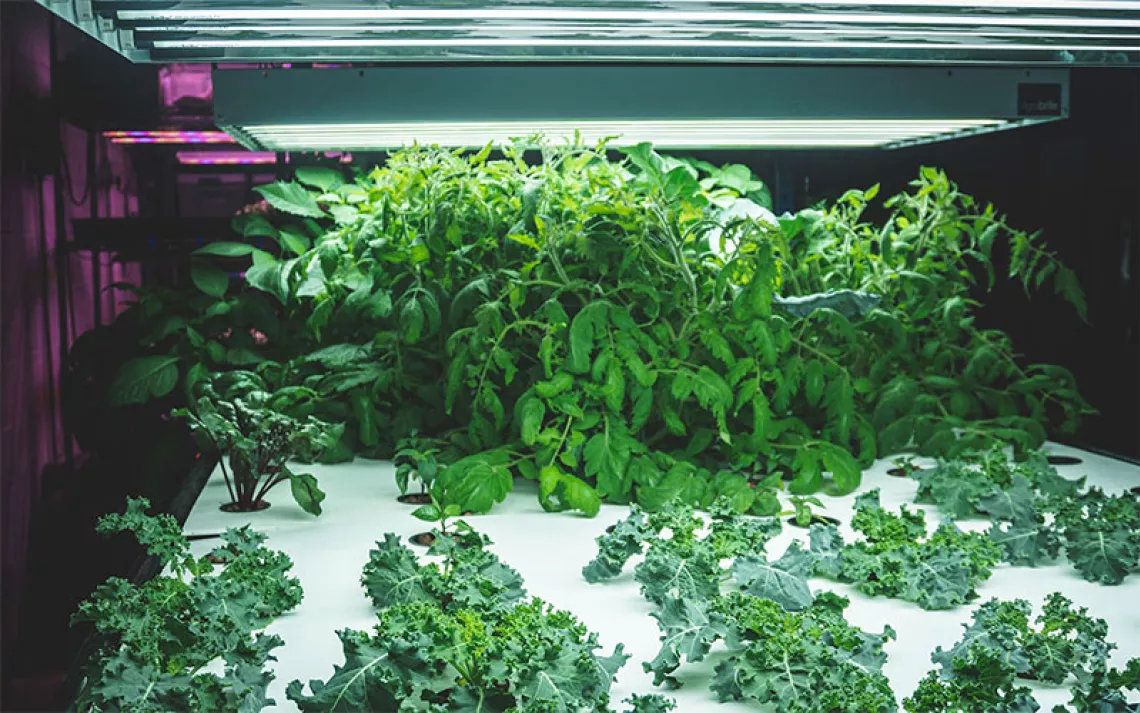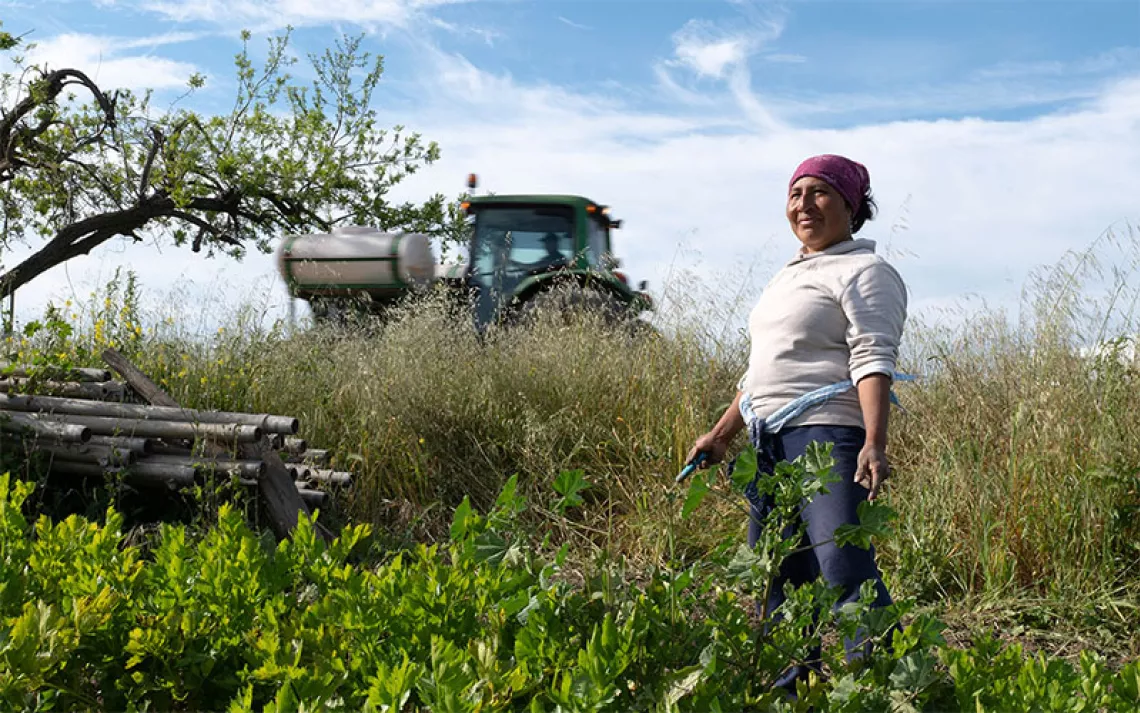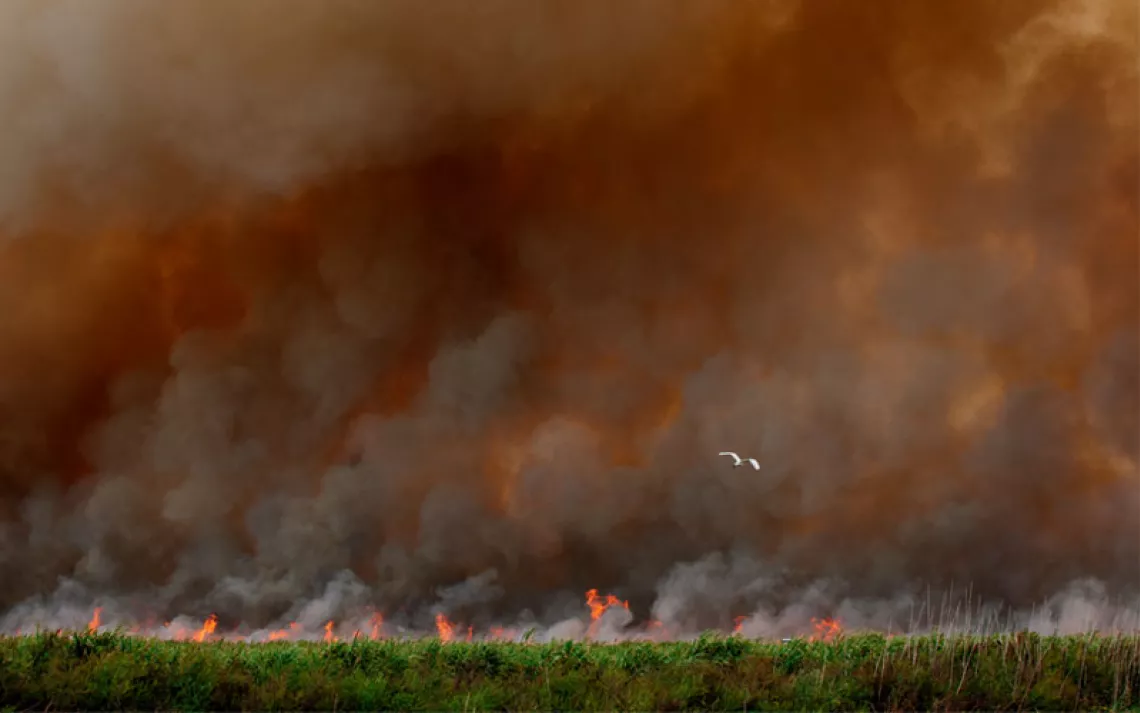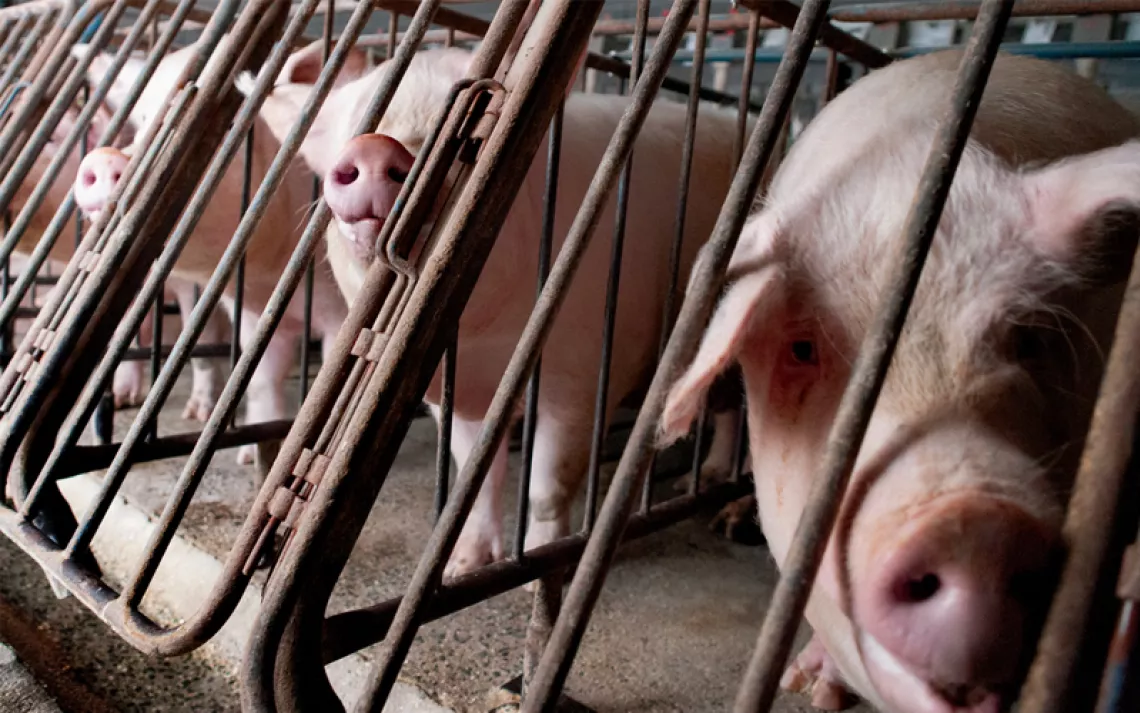Letters to a Young Farmer
Writers offer words of wisdom to those considering a future in farming

Editor’s note: According to the USDA, the average age of a farmer in the United States is 58, and nearly a third of farm operators are 65 or older. This is a problem not just for rural America, but, well, for anyone who likes to eat. No farmers, no food. There are several reasons for young people’s reluctance to commit themselves to the vocation of farming: In many places, good farm land is expensive; the hours are notoriously long and the earnings infamously poor; and, even in the age of farm-to-table dining, there’s a sense that our culture doesn’t appreciate the labor of those who grow food.
In an effort to address these issues, Stone Barns Center for Food and Agriculture, a national nonprofit sustainable-agriculture organization, brought together an impressive roster of writers, thinkers, farmers, and chefs to offer some words of encouragement. The result is Letters to a Young Farmer: On Food, Farming, and Our Future. Below are three excerpts from the book.
“Your vocation is creative”
Barbara Kingsolver
This is getting at the heart of what I want to tell you: However calloused your hands, however grimy the uniform, however your back may sometimes ache, you are a professional. Your vocation is creative, necessary, and intellectually demanding. Unfortunately, you’ll run into a lot of people who won’t see you that way. You’re the offspring of a generation—mine—that largely turned its back on the land and its benefaction. We, in our turn, were raised by a generation that set itself hard to the project of escaping from agriculture. For the latter half of the 20th century, the official story was that modern ingenuity could mechanize farming so efficiently, a handful of folks could oversee the process while everyone else fled the tyrannies of farm life and rural stultification. Legions believed that story, trained their sights on the city lights, and never looked back. Or, they were heartbroken at the prospect of forsaking their family livelihood, but still were forced by poverty to leave the farm for the factory. In any case, they counseled us, their children, to stay in school and study hard so we could score a respectable life sitting at a desk indoors, and never get dirt under our fingernails at all.
The subtext of this message is that manual labor is degrading and that soil is, well, dirty. Some people will see your coveralls and presume, at best, a countrified backwardness, and at worst, a deficit of smarts or ambition. It’s a hateful bigotry, as wrong as equating those deficits with dark skin, or femaleness, or a Southern accent. And I’ll add here, if you are a female Southern farmer of color, I dearly hope you’ve found an online support group.
“Being a farmer is as close as you can get to being with God”
Gary Paul Nabhan
The most important lesson that farming imparts to the wayward human psyche is the constant need for humility. It does so by reminding us that we are really not ever in control and that we will likely be wrong about the complexities of nature and the economy more often than we will be right.
On the other hand, being a farmer is as close as you can get to being with God, in the sense that you are invited to be a co-creator and steward of a beautiful piece of earth. If lovingly and painstakingly cared for, you will see, that farm will heal its own wounds to produce more bounty and diversity than ever before, and you yourself might be healed, too, along the way. God forms partnerships with those in other professions as well, but seldom does she invite a mechanic or bus driver or receptionist to be engaged with creation as intimately as she beckons farmers to do so.
I may be extrapolating a little too much from the scant data I can hold in my head and my heart, but I would argue that the Creator has chosen farmers, foresters, and habitat restorationists to be the glue that keeps the world from falling to pieces. We are the connectivity she shaped between the divine and the dirtiness of life itself; between the animal, the vegetable, the mud, and the miracle; between the soil and the soul. This concept is something that the Southern Agrarians like Robert Penn Warren eloquently articulated nearly a century ago, but I sense that it is even truer today.
Bless all your work, and may the Creator place a salve like Udder Balm on all of your wounds, scars, and suffering. May you plow in peas.

Photo by Zoran Zeremski/iStock
“Farmers big and small, conventional and organic, are all allies”
Amigo Bob Cantisano
There has been an unfortunate yet long-lasting dynamic between organic and conventional growers, and between smaller and larger growers. This clash has been debilitating to the success of all agriculturalists. It is essential to recognize that all scales of farming, and all methods, still require many decades of evolution to achieve true sustainability. It’s important to remember that those who are farming with chemicals or on a large scale are doing so because they believe it is essential and necessary. Few farmers today feel comfortable using chemicals, but they are often unaware of viable options. Their precarious economic conditions prevent them from transitioning away from chemical dependency; they operate from a fear-based mentality that sees farming without the aid of pesticides and other chemicals as too risky and dangerous. I believe that more than 90 percent of the successful transition from conventional to organic is confounded by the farmer’s psychological makeup rather than the technical obstacles. Most of agriculture, and most of our society, has been brainwashed to believe that the solutions and opportunities for ecological success are out of our control. The magic “remedies” that have been sold to our culture over the last 75 years, in combination with a full-court press of misinformation provided by academia, corporations, and ag media, have created an illusion of powerlessness that is very deep-rooted and extremely difficult for many farmers to wake up from. Farmers—big and small, conventional and organic—are all allies, no matter where we are on the continuum of “purity.” Please do not fall into the trap of judging those who use chemicals or farm on a large scale as being wrong. The issue is too nuanced to be addressed through a “small-is-good-and-large-is-bad” or “organic-is-good-and-chemical-is-bad” ideology. We in agriculture are an endangered species, and it does not benefit anyone to belittle or condemn those who have not yet seen the light.
Excerpted from Letters to a Young Farmer: On Food, Farming, and Our Future by Stone Barns Center for Food and Agriculture, edited by Martha Hodgkins, published by Princeton Architectural Press, 2017. Reprinted here with permission of the publisher.
*
Barbara Kingsolver’s 13 books of fiction, poetry, and creative nonfiction include the novels The Bean Trees, The Poisonwood Bible, and The Lacuna, winner of the Orange Prize for Fiction. Translated into more than 20 languages, her work has won a devoted worldwide readership and many awards, including the National Humanities Medal. Many of her books have been incorporated into the core English literature curriculum of colleges throughout the country.
Gary Paul Nabhan is an Ecumenical Franciscan brother, a plant explorer, and an orchard keeper of 150 varieties of heirloom fruits and nuts. He has economically failed at about every other kind of farming he has tried. He used to write books before he met Brother Mule in a dark alley. The mule broke him, not the other way around, so now he only writes short poems.
Amigo Bob Cantisano has farmed a wide range of small- to medium-acreage organic crops in California since 1975. He founded California’s first organic farm supply, first organic-farm–advising service, and first organic-farming conference, among numerous other agricultural accomplishments. He currently farms 11 acres of diversified food crops in the Sierra Nevada of Northern California and advises on more than 45,000 acres of organic and transitional crops throughout the Western Hemisphere.
 The Magazine of The Sierra Club
The Magazine of The Sierra Club



